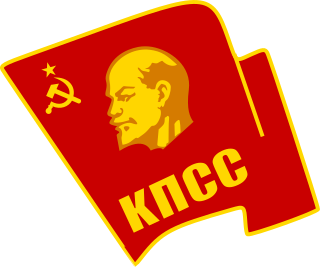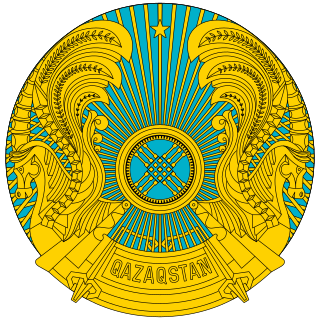 |
|---|
| This article is part of a series on the politics and government of Lithuania |
| Constitution |
Legislature |
Judiciary |
Parliamentary elections were held in Lithuania in 1940. [1] They followed an ultimatum from the Soviet Union to allow Soviet troops to enter the country and operate freely. [1] President Antanas Smetona left Lithuania on 15 June as the Soviet Army occupied the country and took control of the government. [1] After a puppet government led by Justas Paleckis was installed, rigged elections were held. [1]

Lithuania, officially the Republic of Lithuania, is a country in the Baltic region of Europe. Lithuania is considered to be one of the Baltic states. It is situated along the southeastern shore of the Baltic Sea, to the east of Sweden and Denmark. It is bordered by Latvia to the north, Belarus to the east and south, Poland to the south, and Kaliningrad Oblast to the southwest. Lithuania has an estimated population of 2.8 million people as of 2019, and its capital and largest city is Vilnius. Other major cities are Kaunas and Klaipėda. Lithuanians are Baltic people. The official language, Lithuanian, along with Latvian, is one of only two living languages in the Baltic branch of the Indo-European language family.

The Soviet Union issued an ultimatum to Lithuania before midnight of June 14, 1940. The Soviets, using a formal pretext, demanded to allow an unspecified number of Soviet soldiers to enter the Lithuanian territory and to form a new pro-Soviet government. The ultimatum and subsequent incorporation of Lithuania into the Soviet Union stemmed from the division of Eastern Europe into the German and Russian spheres of influence in the Molotov–Ribbentrop Pact of August 1939. Lithuania, along with Latvia and Estonia, fell into the Russian sphere. According to the Soviet–Lithuanian Mutual Assistance Treaty of October 1939, Lithuania agreed to allow some 20,000 of Soviets troops to be stationed at several bases within Lithuania in exchange for a portion of the Vilnius Region. Further Soviet actions to establish its dominance in its sphere of influence were delayed by the Winter War with Finland and resumed in spring 1940 when Germany was making rapid advances in western Europe. Despite the threat to the independence, Lithuanian authorities did little to plan for contingencies and were unprepared for the ultimatum.

Antanas Smetona was one of the most important Lithuanian political figures between World War I and World War II. He served as the first President of Lithuania from 4 April 1919 to 19 June 1920. He again served as the last President of the country from 19 December 1926 to 15 June 1940, before its occupation by the Soviet Union. He was also one of the most prominent ideologists of nationalism in Lithuania.
On 1 July the Paleckis government announced elections to a new parliament, the People's Seimas, to be held on 14 July. The Communist Party of Lithuania emerged from underground with 1,500 members after the Soviet invasion. [2] Soon afterwards, the government announced the formation of the Union of the Working People of Lithuania, ostensibly a popular front. Voters were presented with a single list of candidates, including some non-Communists. Just one candidate was presented for every seat in the new parliament and no other organizations were allowed to participate. On 11 and 12 July the Soviet authorities stifled opposition by arresting leading figures of the previous government and deporting some of them to the interior of the Soviet Union – even though Lithuania was still formally an independent state. The elections were later extended into 15 July. Each voter had his or her passport stamped after voting. According to the official results, voter turnout reached 95% and the Union list received over 99% of the votes. Most of the original election records were destroyed. The remaining data shows that turnout was indeed high, but that many ballots were invalid (missing, destroyed, left blank, or marked with anti-Soviet slogans). The results were announced even before the polls closed.
The People's Seimas was a puppet legislature organized in order to give legal sanction the occupation and annexation of Lithuania by the Soviet Union. After the Soviet ultimatum in June 1940, a new pro-Soviet government was formed, known as the People's Government. The new government dismissed the Fourth Seimas and announced elections to the People's Seimas. The elections were heavily rigged, and resulted in a chamber composed entirely of Communists and Communist sympathizers. The new parliament unanimously adopted a resolution proclaiming the Lithuanian Soviet Socialist Republic and petitioned for admission to the Soviet Union as a constituent republic. The Supreme Soviet of the USSR accepted the Lithuanian petition on August 3, 1940. The People's Seimas adopted a new constitution, a close copy of the 1936 Soviet Constitution, on August 25 and renamed itself to the Supreme Soviet of the Lithuanian SSR.

The Communist Party of Lithuania was a communist party in Lithuania, established in early October 1918. The party was banned in 1991.
The new parliament was convened on 21 July and voted unanimously to request to join the USSR. [1] The country became the Soviet Union's fourteenth member on 3 August. [1]











